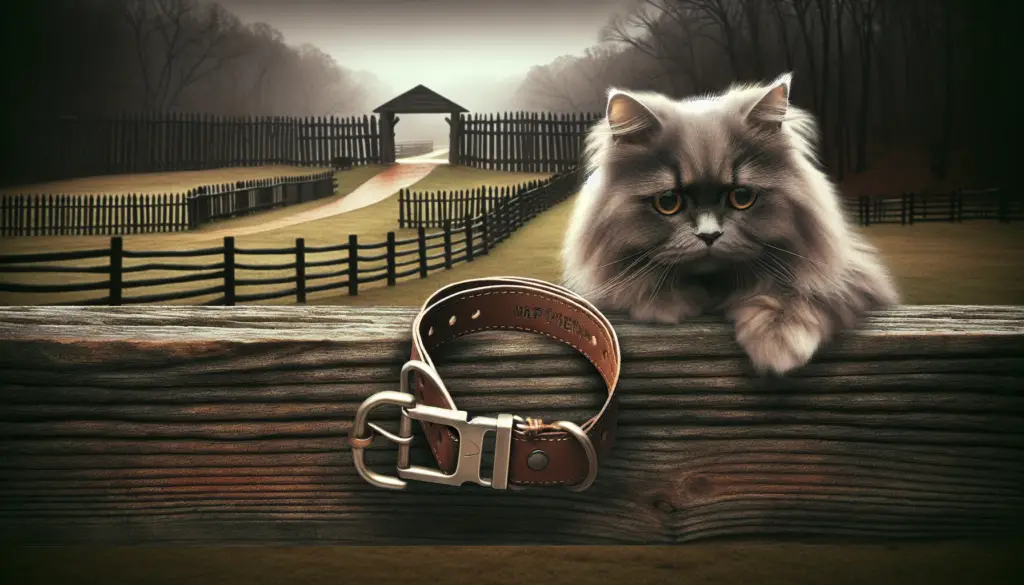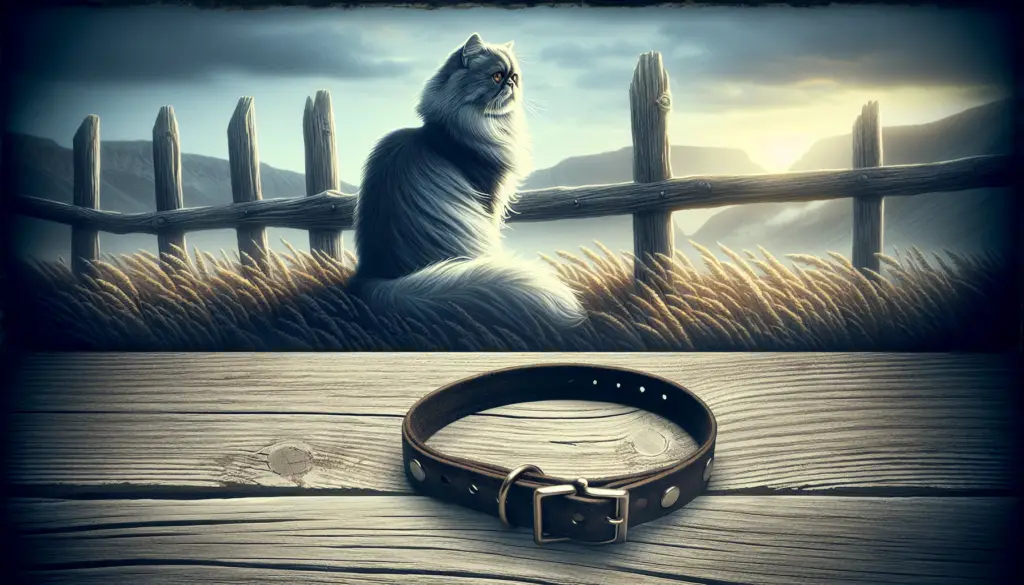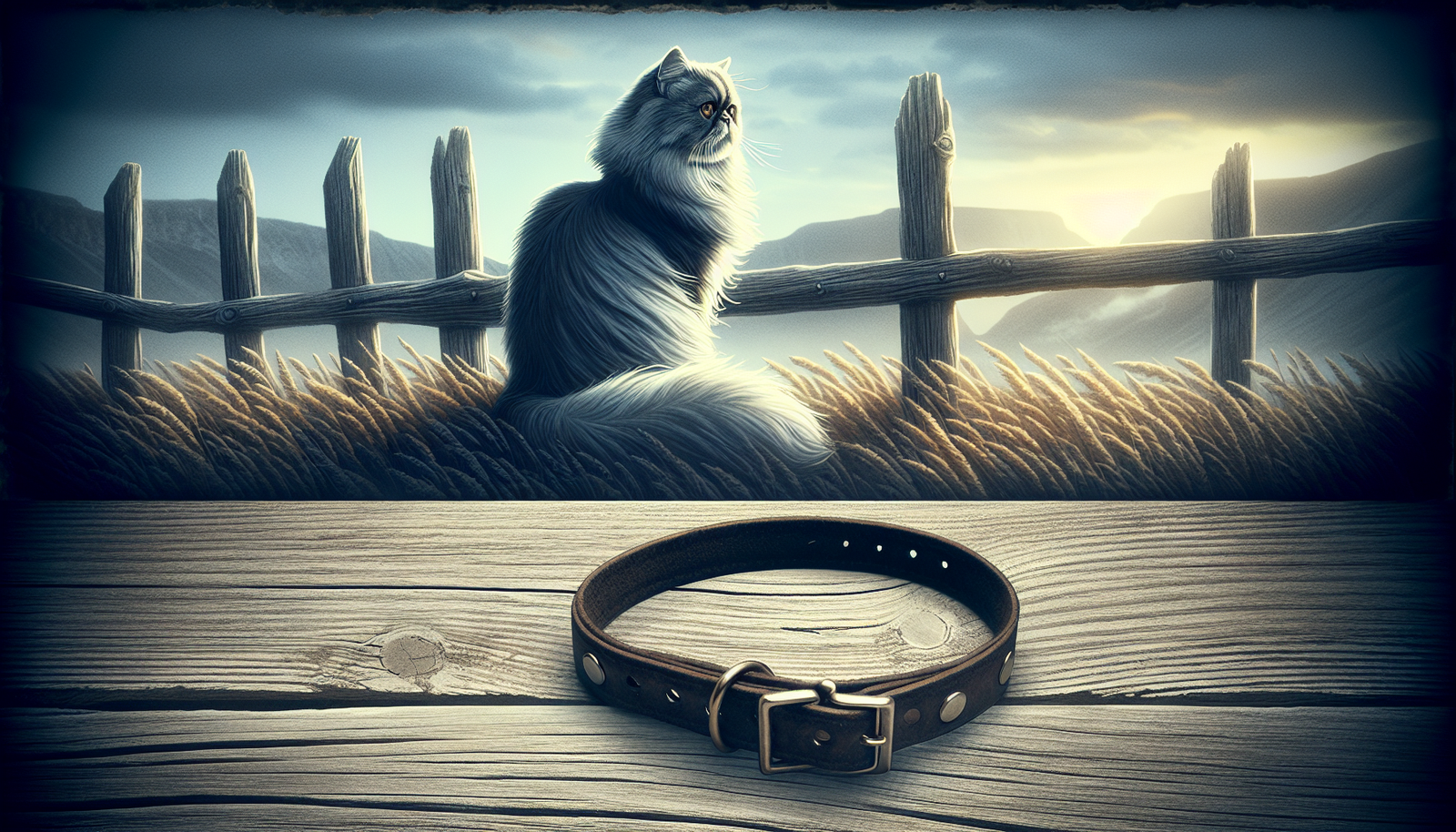Imagine this: you’re strolling through the charming streets of Fort Payne, Alabama, taking in the sights and sounds of this lovely town, when suddenly something catches your eye. It’s a lost, long-haired grey Persian cat, looking forlorn and confused. Your heart goes out to this beautiful creature, and you can’t help but wonder who it belongs to and how it ended up in this predicament. In this article, we will explore the details surrounding the lost long-haired grey Persian cat in Fort Payne, Alabama, and the efforts being made to reunite it with its owner.

Background Information
The Breed: Persian Cats
Persian cats are well-known for their distinctive long, luxurious coats and stunningly beautiful faces. Originating in Persia (modern-day Iran), these cats have a regal demeanor and a calm, gentle nature. Their lush fur requires regular grooming to keep it looking its best, but their stunning appearance and affectionate personalities make them beloved companions.
Description of a Long Haired Grey Persian Cat
A long-haired grey Persian cat is a true sight to behold. With their elegant, flowing silver-grey coats and expressive round eyes, they are often considered one of the most aesthetically pleasing cat breeds. Their fur is silky and soft to the touch, and their gentle nature often makes them popular among families and individuals alike.
Fort Payne, Alabama – Location Information
Nestled in the breathtaking Appalachian Mountains, Fort Payne, Alabama, is a charming city known for its natural beauty and friendly community. Surrounded by picturesque landscapes and outdoor recreational opportunities, this idyllic setting provides the perfect backdrop for pet owners to enjoy their furry companions. With a strong sense of community and a deep appreciation for the natural world, Fort Payne is an ideal place to find a lost pet.
Importance of Finding a Lost Pet
Emotional Bond with Pets
Pets hold a special place in our hearts and become cherished members of our families. The bond between humans and animals is often deep and enduring, with our furry friends providing us with unconditional love, companionship, and comfort. When a beloved pet goes missing, it can cause immense emotional distress for both the owners and the pet itself.
The Need for Immediate Action
Time is of the essence when it comes to finding a lost pet. The longer a pet remains lost, the greater the chances of them encountering dangers, such as traffic accidents, hostile animals, or becoming disoriented and unable to find their way back home. Taking immediate action is crucial to ensure the best chances of locating and bringing your furry friend back to safety.
Safety Concerns for a Lost Cat
Losing a cat, especially one with a long, flowing coat like a Persian, raises safety concerns. Outdoor elements such as extreme temperatures, predators, and hazardous environments can jeopardize the well-being of a lost cat. Quick action must be taken to minimize these risks and ensure the safety of the cat until it can be reunited with its owner.
Lost Long Haired Grey Persian Cat
Date and Location Last Seen
If you have found a long-haired grey Persian cat in Fort Payne, Alabama, it is vital to gather information regarding the date and location where the cat was last seen. This information will help in alerting the community and aid in the search efforts. Remember to document any additional details that may be helpful in identifying the cat’s unique characteristics or habits.
Name and Unique Features
Has the cat been given a name? Knowing the cat’s name can be a powerful tool in building an emotional connection with the lost pet owner and creating a sense of familiarity. Additionally, take note of any unique features the cat possesses, such as distinctive markings, eye color, or any visible signs of identification, such as a collar or tags.
Microchip or Collar Information
Check for a microchip or any identification on the cat. Microchips are a common form of identification placed under the skin and can be scanned by veterinary clinics or animal shelters. Collars with identification tags can also provide valuable information to help reunite the cat with its owner. Contacting the relevant pet registries or veterinary offices can help identify the owner if the cat is indeed microchipped.
Notification and Communication
Contacting Local Animal Organizations
When you find a lost pet, reaching out to local animal organizations is an important step in reuniting the pet with its owner. Contact your local animal shelters, rescue groups, and animal control agencies to report the found cat. Provide them with a detailed description and any available identification information. These organizations have networks and resources to help spread the word and identify the owner.
Utilizing Social Media Platforms
Social media has become a powerful tool for communication, and it can be incredibly effective in reuniting lost pets with their owners. Share a photo and description of the found cat on social media platforms such as Facebook, Instagram, and Twitter. Local community groups, pet-related pages or hashtags, and even neighborhood-specific groups can help amplify the search efforts and reach a wider audience.
Creating Flyers and Posters
Traditional methods such as creating flyers and posters have proven to be successful in finding lost pets. Design eye-catching posters with a clear photo of the lost cat, along with relevant contact information. Make several copies of the poster and distribute them throughout the community, including veterinarian offices, local businesses, community bulletin boards, and places where pet owners frequently visit.

Search Strategies
Searching Within the Neighborhood
Begin your search for the cat within the immediate neighborhood where they were found. Walk around, calling the cat’s name and gently shaking a container of treats or their favorite toy. Look in hiding spots, under cars, and in bushes or small hiding places where a frightened cat may seek refuge. Engage with neighbors, explain the situation, and provide them with your contact information in case they spot the cat.
Reaching Out to Local Shelters
Contact local animal shelters, rescue organizations, and veterinary offices to inform them about the found cat. Provide a detailed description, location, and any available identification information. Shelters often have databases of lost and found pets, and they can match the cat with any reported missing pets.
Asking for Community Assistance
Engage the community in the search efforts by asking neighbors, friends, and local businesses to keep an eye out for any signs of the lost cat. Encourage them to share the cat’s photo and information on their social media platforms or community groups. A collaborative effort increases the chances of success in locating the owner.
Resources for Lost Pet Owners
Fort Payne Animal Control
Fort Payne Animal Control is an essential resource for lost pet owners. They can assist in the search for the cat’s owner by checking their database for any reported missing pets matching the description. Contacting them and providing them with all available details will ensure that they are aware of the found cat and can help facilitate a reunion.
Local Veterinary Clinics
Local veterinary clinics are also valuable resources in reuniting lost pets. They can scan the found cat for a microchip and provide information on any reported missing cats. Notify the clinics in the area about your find, and they can play a crucial role in identifying the cat’s owner.
Online Lost and Found Pet Forums
Online lost and found pet forums, such as websites or social media groups dedicated to reuniting lost pets with their owners, have proven to be effective tools. Participate in these platforms by posting information about the found cat, including a photo, description, and contact details. The wide reach of these online communities can greatly increase the chances of finding the cat’s owner.
Preventing Future Loss
Microchipping and Pet Identification
Microchipping is a reliable and permanent form of identification for pets. It involves inserting a tiny chip beneath the pet’s skin, which contains a unique identification number. Ensure your pet receives a microchip, and remember to update your contact information with the microchip registry if you move or change your phone number. Additionally, always have your pet wear a collar with identification tags, including your phone number.
Securing Indoor Environments
To prevent future loss, create a secure indoor environment for your pet. Secure windows and doors, ensuring they are not easily able to escape. Keep a close eye on them when entering or exiting the house, as cats can slip out unnoticed. Consider creating designated play areas indoors to provide mental stimulation while minimizing the risk of escape.
Establishing Daily Routines
Establishing daily routines can help minimize the risks of a cat wandering off. Ensure your cat receives regular feeding times, playtime, and attention. Consistency in daily routines can create a sense of security and reduce the chances of them seeking adventure outside the home.
Handling a Found Persian Cat
Approaching with Caution and Care
Approach a found Persian cat with caution and care. Keep in mind that they may be frightened or wary of strangers. Speak to them in a calm, reassuring voice and avoid making any sudden movements. Offer them food and water to help build trust and make them feel at ease.
Providing Temporary Shelter
While searching for the cat’s owner, it is essential to provide temporary shelter. Create a safe and comfortable space for the cat, such as a spare room or enclosed area. Provide them with food, water, a litter box, and a cozy bed or blanket. Keep them separate from any resident pets to prevent any potential conflicts.
Contacting the Right Channels
Contact the local animal shelters and veterinary clinics to inform them about the found cat. Provide them with a detailed description, location, and any available identification information. In doing so, you increase the chances of the owner being identified and contacted promptly.
Reuniting with the Owner
Identifying Ownership
When someone comes forward claiming to be the owner of the found cat, take steps to verify their ownership. Ask for proof, such as photographs, veterinary records, or any other identifying information that only the true owner would know. This ensures that the found cat is rightfully returned to its rightful owner.
Ensuring the Owner’s Consent
Before returning the cat to its owner, ensure they are ready to take on the responsibility and have the proper means to care for the cat. Discuss the cat’s health, previous experiences, and any specific needs they may have. Ensure that the owner is committed to providing a safe and loving environment for the cat’s well-being.
Celebrating the Reunion
Reuniting a lost pet with its owner is a joyous occasion worth celebrating. Witnessing the happiness and relief of the owner upon being reunited with their beloved pet is incredibly fulfilling. Share in their joy and know that your efforts have made a significant impact in reuniting a cherished companion with its family.
Conclusion
The Importance of Community Support
When a lost pet is found, the significance of community support cannot be overstated. The collective efforts of individuals, animal organizations, and social media platforms play a crucial role in locating the owner and reuniting them with their beloved pet. The compassion and kindness shown by the community during these times create a strong bond and a genuine sense of belonging.
The Joy of Reuniting Lost Pets
The joy experienced when a lost pet is reunited with its owner is immeasurable. It brings immense satisfaction, knowing that a pet and its owner have been reunited and that the emotional bond remains intact. The reunion serves as a reminder of the deep connections we share with our pets and the lengths we are willing to go to ensure their well-being.
Final Thoughts and Encouragement
In the search for a lost pet, every action counts. Remember that your efforts, no matter how small they may seem, can make a significant difference in reuniting a lost pet with its owner. Be persistent, keep hope alive, and continue to extend a helping hand to those in need. The love and companionship we share with our pets is truly invaluable, and your dedication in reuniting them speaks volumes.

